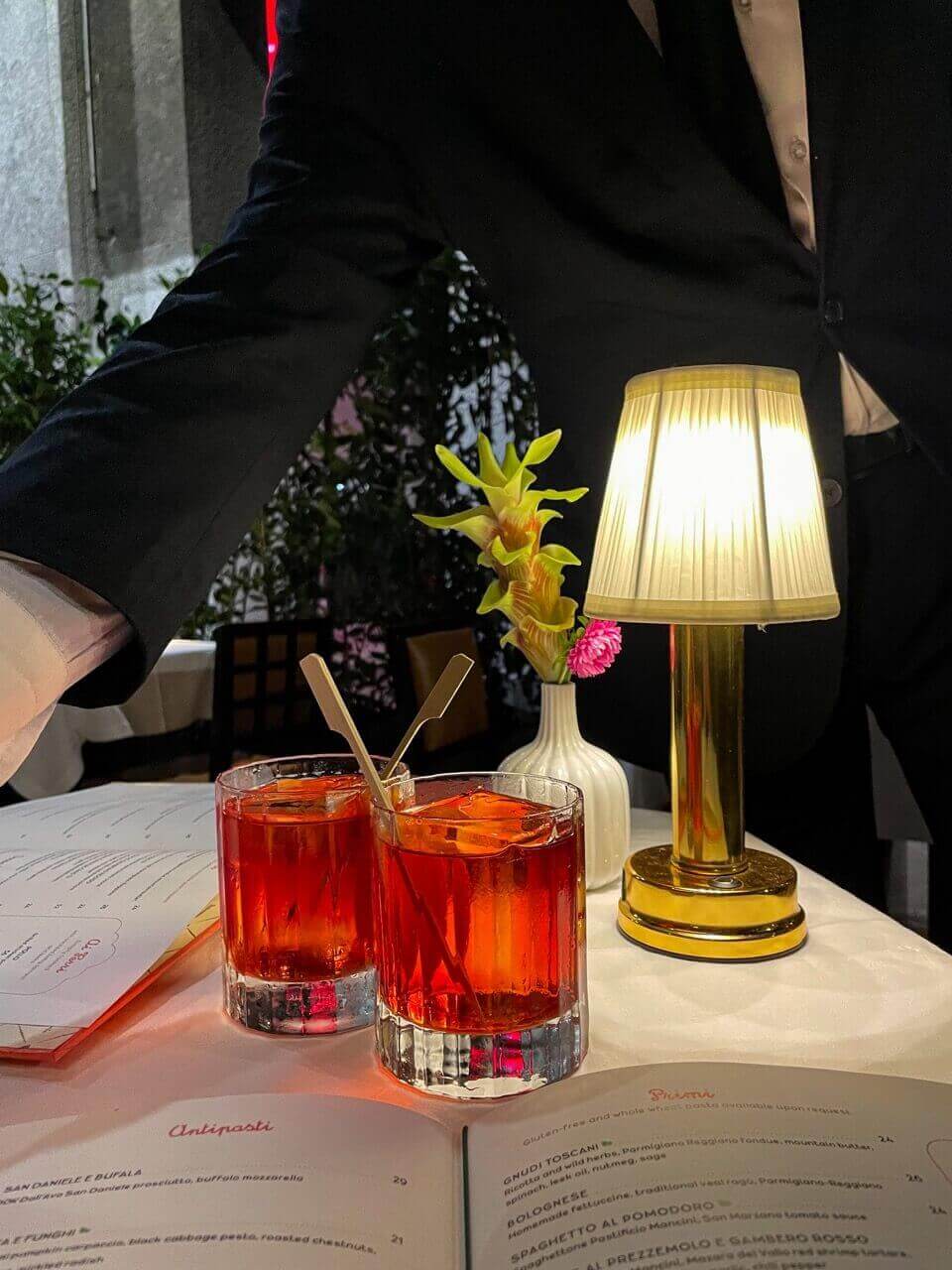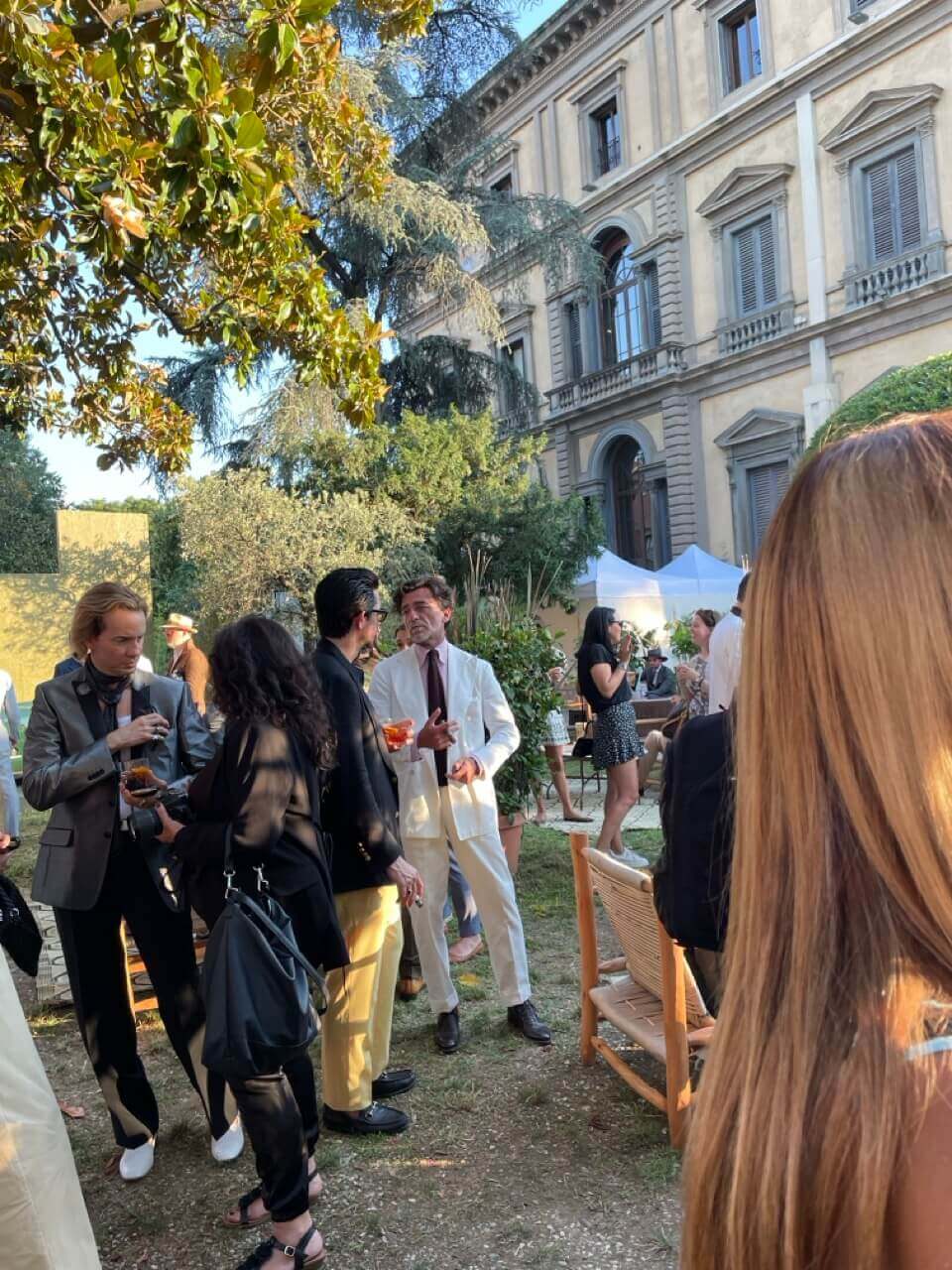There are many cocktail options: “Old Fashioned,” espresso martini, gin and tonic, and much more. But one of the most popular and beloved is the classic Negroni. If I order myself a cocktail, which I don’t do often, Negroni is always my choice. That’s why today I would like to slightly deviate from discussing the wardrobe, which we will now do more often, and diversify our articles by talking about Negroni. After all, knowing what we drink is also an important element of style.

The Origin of the Negroni Cocktail: Camillo Negroni and Caffè Casoni
Let’s start with the history. There are many stories as always, but I chose the one I like the most. That’s how history is made. The exact origin of the cocktail is unknown, but the most common historical information is that it was first created in Florence (Italy) in 1919 at Caffè Casoni, now known as Caffè Roberto Cavalli, located on Via de’ Tornabuoni. This gentleman’s cocktail was invented by Count Camillo Negroni, who asked bartender Fosco Scarselli to make his favorite cocktail “Americano” stronger by replacing soda with gin. To visually differentiate the new cocktail from its predecessor, Scarselli garnished it with an orange slice instead of lemon. After the new cocktail appeared on the bar menu, it immediately gained popularity. Later, the Negroni family founded the Negroni Distillery company and began producing a ready-made version of the drink called “Antico Negroni 1919”.
One of the first written mentions of the “Negroni” cocktail dates back to 1947, when director Orson Welles, in a report from Rome for the Coshocton Tribune, said, “Bitters are very good for the liver, but gin is bad for you. Here, they balance each other out.”
Negroni Variations and Classic Gentleman's Recipe
Negroni variations come in a wide range of flavors and ingredients, each adding a special touch to the classic cocktail. From the light and crisp Americano to the bold and rich Boulevardier, there’s a variation for everyone.
Variations:
– Americano: 1 ounce Campari, 30 ml sweet red vermouth, a splash of soda.
– Boulevardier: whiskey instead of gin.
– Old Pal: dry vermouth and Canadian rye whiskey.
– Agavoni or Tegroni: tequila instead of gin.
– Dutch Negroni: Genever for London dry gin.
– Negroni sbagliato: sparkling white wine or prosecco instead of gin.
– White Negroni: gin, Lillet Blanc, and Suze.
Just a reminder, we’re discussing the classic cocktail, so let’s move on to the recipe:
For a classic Negroni, you’ll need three ingredients:
– Gin
– Campari
– Vermouth

Each of them should be in equal proportions, 30 milliliters each. It’s better if the ice is one large piece rather than broken into several. It looks much more aesthetic. Put the ice in the glass and chill the glass. Pour out the resulting drops from the glass and fill it with the ingredients. When you’ve added everything – gin, vermouth, and Campari – garnish with an orange peel. I’ve noticed that when you squeeze a piece of peel and the essential oils get into the cocktail, it becomes even smoother. The taste of Negroni can vary due to the vermouth or gin. The gentleman’s cocktail is ready, and you can enjoy sipping it slowly, enjoying the beautiful place and company.
Memories: Sipping Variations in Florence's Giggli Bar
When I was in Florence at the famous Giggli bar, I met a bartender who made me different Negronis, and there was always a different vermouth that he let me taste beforehand.
Here’s a photo of the vermouth that I liked the most:

Often, on Aperetivo including nuts, crackers, and other small snacks are served with the cocktail. For me, Negroni is a rare drink that I enjoy, and it’s important for me to surround myself with good people, enjoy a beautiful place, and have conversations. And, of course, always look like a gentleman in the bar.
Fact in the Spotlight
The history of Campari begins in the 1860s. The drink owes its creation to a man named Gaspare Campari. Gaspare was passionate about mixology, and during this time, inspired by Dutch culinary traditions, he began experimenting with bitter drinks. In 1867, Campari opened his own bar, Camparino, in Milan, which soon became a favorite spot for the city’s cultured residents. In this bar, which still exists to this day, Gaspare prepared his famous bitter and cocktails with it.
Quote of the Week
Failure is simply the opportunity to begin again, this time more intelligently.
Henry Ford
That’s all for today. See you on Saturday next week!
Yours sincerely, Anton Masko







